- Salvia: The Perfect Addition to Your Garden
- Why Choose Salvia?
- How to Grow Salvia
- Final Thoughts
- Benefits of Growing Salvia in Your Garden
- Choosing the Right Salvia Seeds
- 1. Species
- 2. Growing Zone
- 3. Sunlight Requirements
- 4. Height and Spread
- 5. Flowering Time
- 6. Seed Source
- Preparing the Soil for Salvia
- Planting Salvia Seeds
- 1. Choose a Suitable Location
- 2. Prepare the Soil
- 3. Sow the Seeds
- 4. Water the Seeds
- 5. Provide Proper Care
- 6. Protect from Pests and Diseases
- 7. Harvesting Seeds
- Watering and Caring for Salvia
- Watering:
- Fertilizing:
- Mulching:
- Pruning:
- Pest and Disease Control:
- Common Pests and Diseases of Salvia
- Pests
- Diseases
- Harvesting and Using Salvia
- Questions and Answers:
- How can I grow salvia from seeds?
- What type of soil is best for growing salvia from seeds?
- When is the best time to plant salvia seeds?
- How long does it take for salvia seeds to germinate?
- Can I grow salvia from cuttings instead of seeds?
- Do salvia plants require a lot of maintenance?
- Videos: How to Grow & Care Salvias in Pots – Seedlings to Flowering
Salvia, commonly known as sage, is a beautiful flowering plant that can add a touch of color to any garden. With over 900 different species, there is a variety of salvia that will suit any gardener’s needs. Growing salvia from seed is a rewarding process that allows you to witness the plant’s growth from a tiny seedling to a vibrant flower.
When it comes to growing salvia from seed, there are a few key factors to consider. First and foremost, it is important to choose a suitable location in your garden. Salvia thrives in full sun, so make sure to select a spot that receives at least 6 hours of direct sunlight each day. Additionally, salvia prefers well-draining soil, so be sure to prepare the planting area by adding compost or other organic matter to improve drainage.
Once you have chosen the perfect location, it’s time to prepare the seeds for planting. Salvia seeds are tiny, so be careful when handling them. It is recommended to start the seeds indoors about 8-10 weeks before the last frost date. Sow the seeds on the surface of moist seed compost and cover them lightly with a thin layer of vermiculite or fine soil. Keep the soil consistently moist but not waterlogged, and provide bottom heat to encourage germination.
As the seedlings begin to grow, it’s important to thin them out to allow for proper spacing. Transplant the seedlings into individual pots once they have developed their first true leaves. When the threat of frost has passed and the seedlings are strong enough, transplant them into the garden. Water the newly transplanted seedlings thoroughly and provide them with regular water until they become established.
Salvia is a relatively low-maintenance plant, but it does require regular care. Water the plants deeply once a week, allowing the soil to dry out slightly between waterings. Deadhead the flowers regularly to encourage continuous blooming. Additionally, apply a slow-release fertilizer in the spring and again in the fall to help promote healthy growth.
By following these tips, you can enjoy the beauty and fragrance of salvia in your garden. Whether you choose to grow them in containers or directly in the ground, salvia is a versatile plant that will thrive with a little care and attention.
Salvia: The Perfect Addition to Your Garden
When it comes to adding beauty and diversity to your garden, salvia is the perfect option. This lovely flowering plant boasts vibrant colors and unique foliage, making it a striking addition to any landscape. Whether you have a small backyard garden or a spacious outdoor space, salvia can thrive and bring life to your surroundings.
Why Choose Salvia?
There are several reasons why salvia is a great choice for your garden:
- Colorful Blooms: Salvia comes in a variety of colors, including red, purple, blue, pink, and white. These vibrant blooms can add a pop of color to your garden and attract pollinators like bees and butterflies.
- Low Maintenance: Salvia is relatively low maintenance, making it a great option for beginner gardeners or those with limited time for gardening. With the right care, salvia can thrive and continue to bloom year after year.
- Drought Tolerant: Many varieties of salvia are drought-tolerant, meaning they can withstand periods of dry weather. This makes them a great option for gardens in regions with hot summers or limited water resources.
- Attracts Pollinators: Salvia is a magnet for pollinators like bees and butterflies. By planting salvia in your garden, you can create a haven for these beneficial insects and contribute to the overall health of your local ecosystem.
How to Grow Salvia
If you’re ready to add salvia to your garden, here are some tips to help you get started:
- Choose the Right Variety: There are many different varieties of salvia to choose from, so it’s important to select one that suits your garden’s needs. Consider factors like height, bloom color, and growing conditions when making your selection.
- Plant in Well-Draining Soil: Salvia prefers well-draining soil to avoid root rot. Amend your soil with organic matter like compost to improve drainage before planting.
- Provide Adequate Sunlight: Most varieties of salvia thrive in full sun, although some can tolerate partial shade. Ensure your salvia plants receive at least 6-8 hours of sunlight per day for optimal growth.
- Water Regularly: While salvia is drought-tolerant, it’s important to water newly planted salvia regularly to help establish their roots. Once established, salvia plants typically require less frequent watering.
- Prune Regularly: To encourage bushier growth and prolong blooming, prune your salvia plants regularly. Remove any dead or faded flowers to promote new blooms.
Final Thoughts
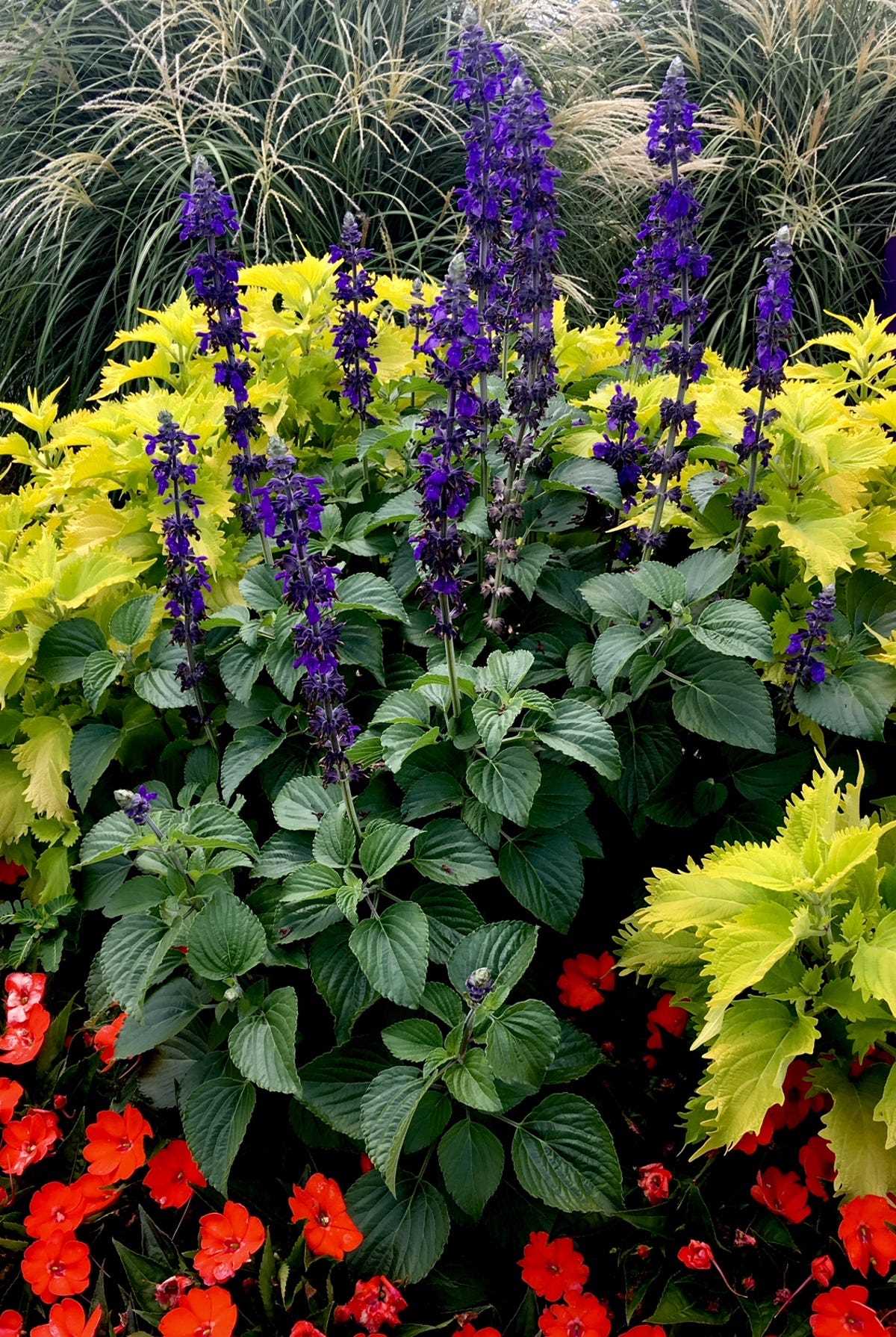
With its vibrant colors, low maintenance nature, and ability to attract pollinators, salvia is the perfect addition to any garden. Whether you’re a seasoned gardener or just starting out, growing salvia can bring beauty and joy to your outdoor space. So why wait? Start growing salvia today and enjoy its stunning blooms for years to come.
Benefits of Growing Salvia in Your Garden
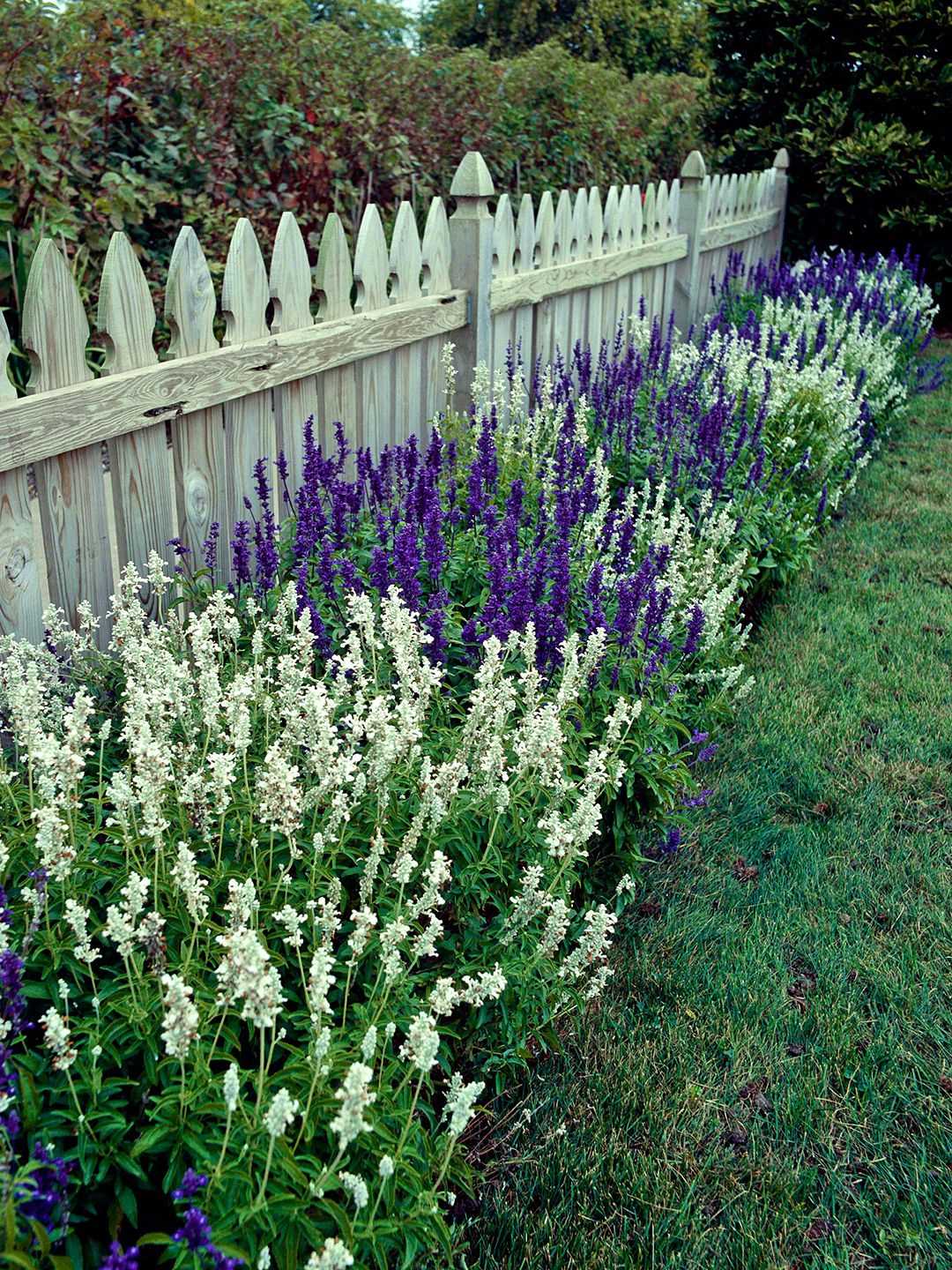
- Attracts Pollinators: Salvia plants are known for their vibrant colored flowers that attract pollinators such as bees, butterflies, and hummingbirds. By growing salvia in your garden, you can help support the local ecosystem and ensure the health of your surrounding plants.
- Low Maintenance: Salvia is a relatively low maintenance plant, making it perfect for gardeners of all skill levels. With minimal care, salvia can thrive in a variety of soil conditions and climates, making it a versatile addition to any garden.
- Long Blooming Period: Salvia plants have a long blooming period, with some varieties blooming from spring through fall. This means you’ll be able to enjoy their beautiful flowers for an extended period of time, adding color and interest to your garden throughout the seasons.
- Medicinal Properties: Salvia plants have been used for centuries for their medicinal properties. They contain compounds that have anti-inflammatory, antioxidant, and antimicrobial effects. Growing salvia in your garden gives you easy access to these natural remedies.
- Drought Tolerant: Salvia plants are known for their ability to tolerate drought conditions. This makes them an ideal choice for gardeners in areas with limited water availability or for those looking to conserve water in their garden.
- Deer and Rabbit Resistant: Salvia plants are generally deer and rabbit resistant, making them a great choice for gardens located in areas with these common garden pests. By growing salvia, you can avoid the damage that these animals can cause to your plants.
- Easy Propagation: Salvia plants are relatively easy to propagate, whether through division, cuttings, or seed sowing. This means that once you have a successful salvia plant in your garden, you can easily create more plants to expand your garden or share with others.
Choosing the Right Salvia Seeds
When it comes to growing salvia from seed, choosing the right seeds is crucial for a successful outcome. Here are some factors to consider when selecting salvia seeds for your garden:
1. Species
Salvia encompasses a wide variety of species, each with its own unique characteristics. Some popular species include Salvia officinalis (common sage), Salvia splendens (scarlet sage), Salvia nemorosa (woodland sage), and Salvia coccinea (tropical sage). Consider the growth habit, flower color, and overall appearance of the species when making your selection.
2. Growing Zone
Salvia seeds should be selected based on the growing zone in which you live. Different species and varieties of salvia have different hardiness levels and may not thrive in all climates. Refer to the USDA Plant Hardiness Zone Map to determine the appropriate salvia species for your specific zone.
3. Sunlight Requirements
Consider the amount of sunlight your garden receives before choosing salvia seeds. Some varieties prefer full sun, while others can tolerate partial shade. Read the seed packet or consult gardening resources to find out the sunlight requirements of the specific salvia species you are interested in.
4. Height and Spread
Take into account the ultimate height and spread of the salvia species you are considering. Some varieties are tall and upright, making them suitable for the back of flower borders, while others are low-growing and spreading, making them ideal for ground cover or edging. Consider the available space in your garden and select seeds accordingly.
5. Flowering Time
If you have a specific flowering period in mind for your garden, consider the blooming time of the salvia species. Some varieties bloom earlier in the season, while others flower in late summer or fall. Choose seeds that will complement the existing flower schedule in your garden or create the desired seasonal display.
6. Seed Source
Choose reputable seed sources to ensure the quality of the salvia seeds. Look for organic or heirloom options, and read reviews or ask fellow gardeners for recommendations. High-quality seeds are more likely to germinate successfully and produce healthy plants.
By considering these factors and selecting the right salvia seeds for your garden, you can enjoy the beauty and benefits of growing salvia from seed.
Preparing the Soil for Salvia
One of the most important steps in growing Salvia from seed is preparing the soil. Salvia plants prefer well-drained soil that is slightly acidic, with a pH level between 6.0 and 7.0. Here are some tips to help you prepare the soil for Salvia:
- Choose a sunny location: Salvia thrives in full sun, so choose a spot in your garden that gets at least 6-8 hours of direct sunlight each day.
- Clear the area: Remove any weeds, rocks, or debris from the planting area to ensure that the Salvia plants have enough space to grow and thrive.
- Loosen the soil: Use a garden fork or tiller to loosen the soil to a depth of about 12-18 inches. This will help the roots of the Salvia plants to penetrate the soil easily and access nutrients.
- Add organic matter: Incorporate organic matter, such as compost or well-rotted manure, into the soil. This will improve drainage, add nutrients, and enhance the overall quality of the soil.
- Test the soil pH: Use a soil testing kit to determine the pH level of your soil. If the pH is below 6.0, you may need to add lime to raise the pH. If the pH is above 7.0, you may need to add sulfur to lower the pH. Aim for a pH level between 6.0 and 7.0 for optimal Salvia growth.
- Amend the soil: Based on the results of the soil test, amend the soil as needed to achieve the desired pH level. Follow the instructions on the packaging of the lime or sulfur to determine the appropriate amount to add.
By following these steps to prepare the soil, you will create an ideal growing environment for Salvia. This will help your Salvia plants thrive and produce beautiful flowers.
Planting Salvia Seeds
Planting salvia seeds is relatively easy and straightforward. Here are some tips to help you successfully grow salvia from seed in your garden:
1. Choose a Suitable Location
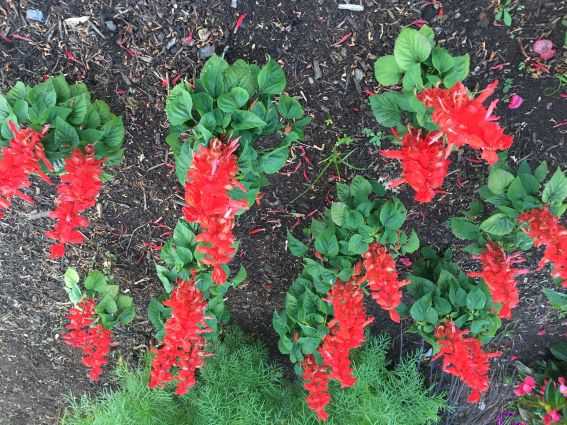
Salvia plants prefer full sun, so choose a location in your garden that receives at least 6-8 hours of direct sunlight each day. Make sure the soil is well-draining and loose to prevent waterlogging.
2. Prepare the Soil
Before planting the seeds, prepare the soil by removing any weeds or debris. Loosen the soil using a garden fork or tiller to a depth of about 6-8 inches. Mix in some compost or well-rotted manure to improve soil fertility.
3. Sow the Seeds
Salvia seeds are small, so sprinkle them directly on the soil surface. Press them gently into the soil, but do not cover them completely as they need light to germinate. It is recommended to sow the seeds in rows, about 12-18 inches apart.
4. Water the Seeds
After sowing the seeds, water the area gently to moisten the soil. While salvia plants are drought-tolerant once established, it is important to keep the soil evenly moist during germination. Avoid overwatering, as it can lead to rotting of the seeds.
5. Provide Proper Care
As the seedlings emerge, thin them out to provide adequate space for each plant to grow. Keep the soil lightly moist, but not soggy, throughout the growing season. Fertilize the salvia plants with a balanced fertilizer once a month to promote healthy growth.
6. Protect from Pests and Diseases
Monitor the plants regularly for any signs of pests or diseases. Common pests that can affect salvia include aphids, slugs, and spider mites. Use appropriate organic pest control methods to protect your plants.
7. Harvesting Seeds
If you want to collect seeds from your salvia plants, allow the flowers to mature and dry on the plant. Once the flowers have dried, remove the seed heads and store them in a cool, dry place. The seeds can be sown in the following year to grow new salvia plants.
By following these simple steps, you can successfully grow salvia from seed in your garden and enjoy the beautiful blooms of this vibrant plant.
Watering and Caring for Salvia
Proper watering is essential for the health and longevity of your salvia plants. Here are some tips to help you care for your salvia:
Watering:
- Water your salvia plants consistently to keep the soil evenly moist. Avoid overwatering, as this can lead to root rot.
- Check the soil moisture level by sticking your finger about an inch into the soil. If it feels dry, it’s time to water.
- Water deeply, allowing the water to penetrate the root zone. This encourages the roots to grow deeper and makes your plants more drought-resistant.
- During hot, dry periods, you may need to water your salvia plants more frequently to prevent wilting.
Fertilizing:
- Salvia plants generally do not require much fertilization. A balanced, slow-release fertilizer applied once in spring should be sufficient.
- Avoid over-fertilizing, as this can lead to excessive foliage growth and fewer blooms.
Mulching:
- Applying a layer of organic mulch around your salvia plants can help retain moisture, suppress weed growth, and regulate soil temperature.
- Avoid piling mulch too close to the base of the plants, as this can promote rot and disease.
Pruning:
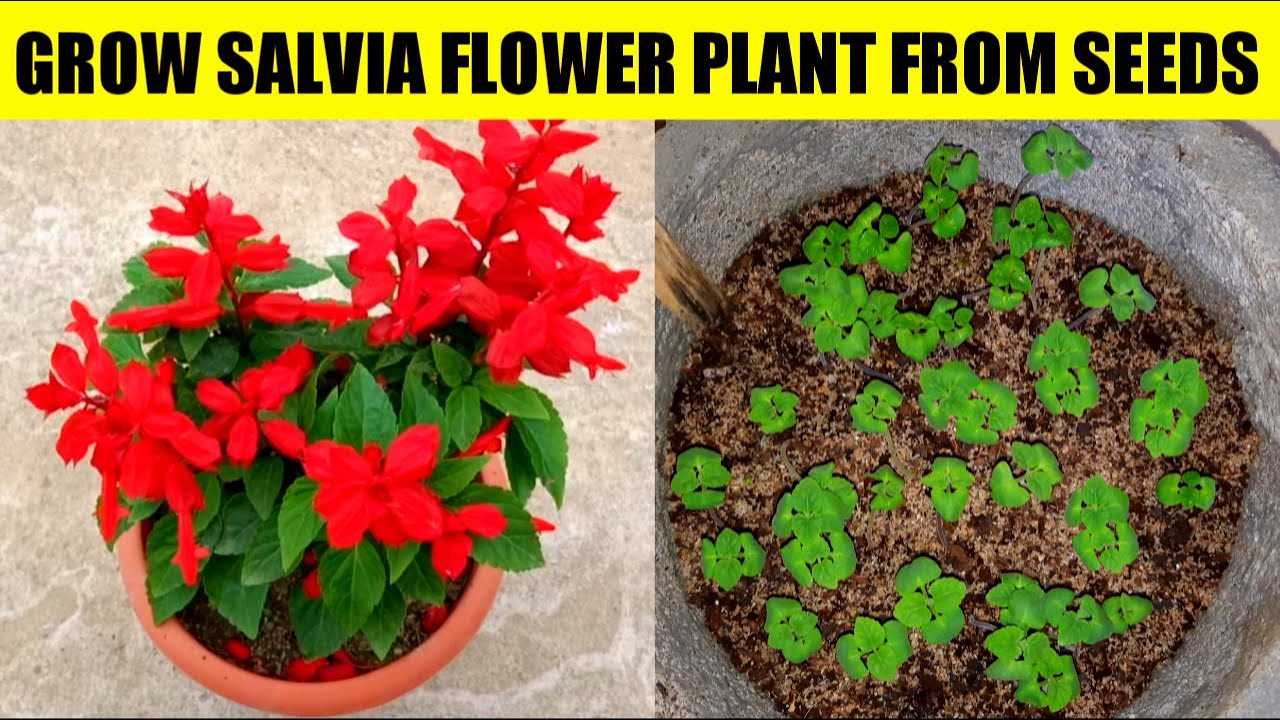
- Regular pruning helps maintain the shape and compactness of your salvia plants.
- Remove any dead, damaged, or diseased foliage or flowers to promote healthy growth.
- Prune back the plants in early spring to encourage new growth and prevent legginess.
Pest and Disease Control:
- Salvia plants are generally pest and disease-resistant, but they can occasionally be bothered by aphids, spider mites, or powdery mildew.
- Inspect your plants regularly and take action at the first sign of pests or disease.
- Use organic pest control methods or consult a garden center for appropriate insecticides or fungicides.
By following these watering and caring guidelines, you can enjoy healthy, vibrant salvia plants in your garden.
Common Pests and Diseases of Salvia
Salvia plants are generally hardy and resistant to many pests and diseases. However, there are a few common issues that can affect their health and growth. Here are some of the most common pests and diseases that can affect salvia:
Pests
- Aphids: Aphids are small, soft-bodied insects that feed on the sap of plants. They can cause curled leaves, yellowing, and stunted growth. Regularly inspect your salvia plants for signs of aphids, and if found, control them by washing the plants with a strong stream of water or using insecticidal soap.
- Whiteflies: Whiteflies are tiny, winged insects that feed on the underside of the leaves. They can cause yellowing, wilting, and the growth of black sooty mold. Whiteflies can be controlled by using yellow sticky traps, spraying with insecticidal soap, or introducing natural predators such as ladybugs or lacewings.
- Spider mites: Spider mites are tiny pests that are known for spinning webs on the leaves of plants. They suck the sap from the leaves, causing yellowing and stippling. Spider mites can be controlled by regularly spraying the plants with water to increase humidity or using insecticidal soap.
- Slugs and snails: Slugs and snails can chew holes in the leaves of salvia plants. To prevent slug and snail damage, you can create barriers around the plants using copper tape or diatomaceous earth. Additionally, handpicking or using beer traps can help control these pests.
- Leafhoppers: Leafhoppers are small, winged insects that can transmit diseases to salvia plants. They can cause yellowing, wilting, and distorted growth. To control leafhoppers, remove any heavily infested leaves and use insecticidal soap or neem oil.
Diseases
- Powdery mildew: Powdery mildew is a fungal disease that appears as a white, powdery coating on the leaves of plants. It thrives in humid conditions and can cause stunted growth and distortion. To prevent powdery mildew, ensure good air circulation around the plants, avoid over-watering, and remove any infected plant parts.
- Root rot: Root rot is a fungal disease that affects the roots of plants, causing them to become soft and dark. It is often caused by over-watering or poorly draining soil. To prevent root rot, ensure the salvia plants are planted in well-draining soil and avoid over-watering.
- Gray mold: Gray mold is a fungal disease that causes grayish-brown, fuzzy growth on the leaves, stems, and flowers of plants. It thrives in humid conditions and can quickly spread to other plants. To prevent gray mold, ensure good air circulation, avoid overhead watering, and remove any infected plant parts.
- Leaf spot: Leaf spot is a fungal disease that causes brown or black spots on the leaves of plants. It can be caused by a variety of fungal pathogens. To prevent leaf spot, avoid overhead watering, provide good air circulation, and remove any infected plant parts.
- Verticillium wilt: Verticillium wilt is a soil-borne fungal disease that affects the vascular system of plants. It can cause wilting, yellowing, and stunted growth. The best way to prevent verticillium wilt is to plant salvia varieties that are resistant to this disease and practice crop rotation.
By being vigilant and taking appropriate measures to prevent and control pests and diseases, you can ensure the health and vitality of your salvia plants.
Harvesting and Using Salvia
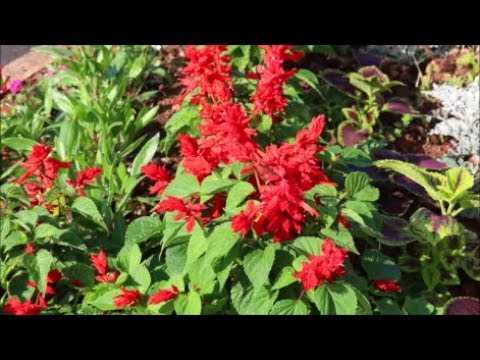
Once your salvia plants have matured and are producing flowers, it’s time to harvest them for use. Here are some tips for harvesting and using salvia:
- Harvesting: Cut the stems of the salvia flowers just above the leaves, using clean and sharp gardening shears. It’s best to harvest in the morning when the plants are hydrated and the weather is cooler.
- Drying: After harvesting, hang the stems upside down in a cool, dark, and well-ventilated area. Allow the flowers to dry completely, which usually takes about two weeks. You can also place them on a drying rack or screen.
- Storing: Once the flowers are fully dried, store them in an airtight container, such as a glass jar, to preserve their potency and flavor. Keep the container in a cool, dry, and dark place like a pantry or cupboard.
- Using: Salvia can be used in various ways:
- Tea: Infuse the dried salvia flowers in hot water to make a calming and relaxing herbal tea. Steep a tablespoon of dried flowers in a cup of boiling water for about 10 minutes. Strain and enjoy.
- Incense: Burn dried salvia flowers as incense to create a soothing and fragrant atmosphere. Simply light a dried flower and let it smolder on a fireproof surface.
- Culinary Uses: Salvia leaves can be used in cooking to add a unique flavor to dishes. Finely chop fresh or dried leaves and sprinkle them on roasted meats, vegetables, soups, or stews. They pair well with poultry and stuffing recipes.
- Medicinal Purposes: Salvia has been traditionally used for its medicinal properties. It is believed to have anti-inflammatory, antimicrobial, and antioxidant effects. However, it’s important to consult with a healthcare professional before using salvia for any medicinal purposes.
Remember to always use salvia responsibly and in moderation. If you’re unsure about its uses or effects, it’s best to seek guidance from an expert or professional.
Questions and Answers:
How can I grow salvia from seeds?
To grow salvia from seeds, start by planting the seeds in a seed tray or small pots filled with well-draining soil. Lightly cover the seeds with a thin layer of soil and water gently. Keep the soil moist but not waterlogged. Place the tray or pots in a warm and bright location, such as a sunny window sill. The seeds should germinate within 1-3 weeks. Once the seedlings have grown a few inches tall, transplant them into larger pots or directly into the garden.
What type of soil is best for growing salvia from seeds?
Salvia plants thrive in well-draining soil. It’s best to use a mixture of sandy and loamy soil with good drainage. You can also add organic matter, such as compost, to improve the soil structure and provide nutrients for the growing plants. Avoid using heavy clay soil or soil that retains too much moisture, as it can cause root rot in salvia plants.
When is the best time to plant salvia seeds?
The best time to plant salvia seeds is in the spring, after the last frost has passed and the soil has started to warm up. Salvia plants are sensitive to cold temperatures, so it’s important to wait until the risk of frost has passed before sowing the seeds. You can also start the seeds indoors about 6-8 weeks before the last frost date and transplant the seedlings outdoors once the weather has warmed up.
How long does it take for salvia seeds to germinate?
Salvia seeds usually take 1-3 weeks to germinate, depending on the variety and growing conditions. It’s important to keep the soil moist during this time to ensure successful germination. Once the seeds have sprouted, you can gradually reduce the amount of watering, as salvia plants prefer slightly drier conditions.
Can I grow salvia from cuttings instead of seeds?
Yes, salvia can also be propagated from cuttings. To grow salvia from cuttings, take 3-4 inch long stem cuttings from a healthy and established plant. Remove the lower leaves from the cuttings and dip the cut ends in rooting hormone. Plant the cuttings in a well-draining soil mixture and keep them in a warm and humid environment. The cuttings should root within a few weeks, and you can then transplant them into larger pots or directly into the garden.
Do salvia plants require a lot of maintenance?
Salvia plants are relatively low-maintenance and easy to grow. They require regular watering, especially during dry periods, but be careful not to overwater as they prefer slightly drier conditions. Deadheading faded flowers can encourage more blooms. In colder climates, salvia plants may die back in the winter, but they usually regrow from the base in the following spring. Additionally, salvia plants benefit from occasional fertilization with a balanced fertilizer to promote healthy growth.







